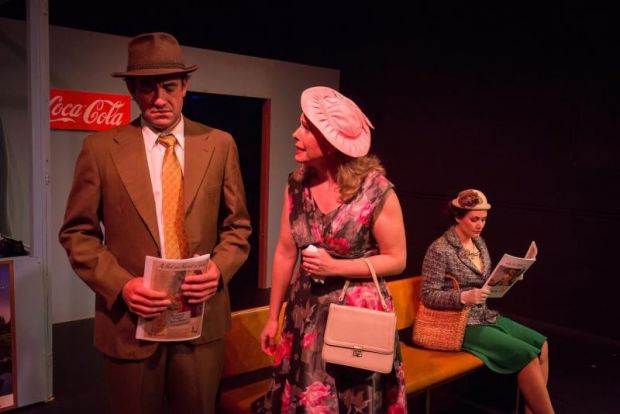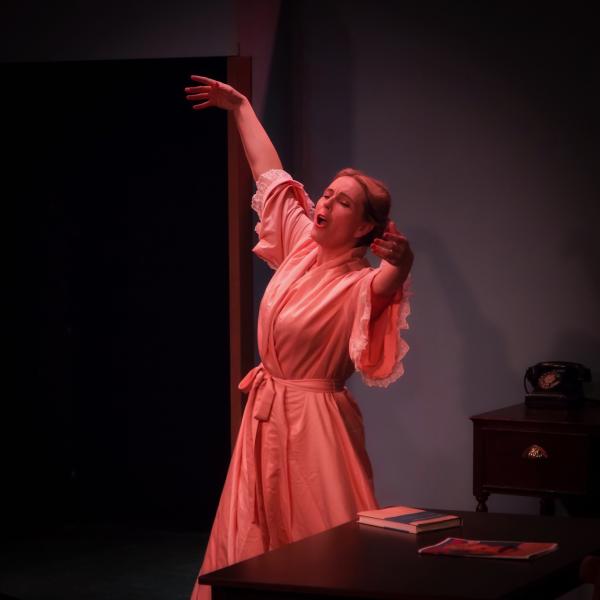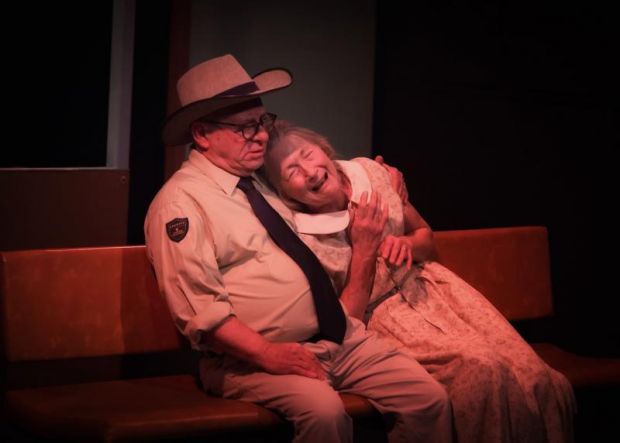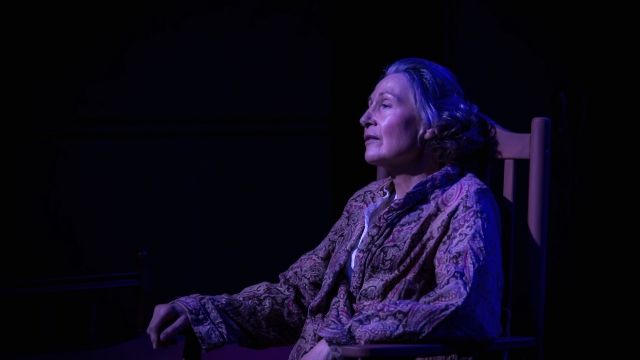The Trip to Bountiful
Carrie Watts longs to escape the two-room apartment she shares with her son Ludie, and self-centred daughter-in-law Jessie Mae. She wants to return to her home town of Bountiful – and her illness makes her wish more urgent. Jessie Mae’s dominance over mother and son – and her reliance on that regular pension cheque - makes that trip even more challenging to take.
Sharon Malujlo is a brilliant Mrs Watts: stubborn, proud – but most of all, determined to get out of the tiny rooms and back to her memories of the lush country of her childhood. Malujlo brings the audience to both cheers and tears in telling the stories of her past. It’s beyond nostalgic: the more we’re told, the more scratches we see on the rose-tinted glasses.

Her son Ludie is brought to life by Leighton Vogt, full of wistful longing, moments of self-determination torn by and between the loyalties to his mother and his wife. Vogt brings enough of Ludie to the surface to define the man, but there’s a mercurial life-that-could-be behind those eyes.
This 1953 play from playwright and screenwriter Horton Foote premiered on US television, before opening on Broadway later that year, winning a Tony Award – its twentieth century Broadway revivals have also been well-awarded. Foote adapted his own work for a feature film in 1985, which was nominated for two Academy Awards, winning one for Best Actress.

Directed gently by Libby Drake, she’s drawn every one of Foote’s characters as imperfect and sympathetic. Even Krystal Cave’s self-centred Jessie Mae has moments of warmth and kindness. Cave is formidable as the woman who knows what she wants, and she wants it right now. She treads the tightrope between self-absorption and selfishness so well – and with such style too!
The beautiful costumes (designed by Lisa Lanzi), are wonderful but more than dressing, they are an essential driver of the story. Ludie’s striped pyjamas, in two tones of melancholy blue, suggest the clothes of a man imprisoned – which is a great opening statement for the man. Jessie Mae’s bold colours scream ‘look at me’, and at the other end of the attention scale, Carrie’s lightly coloured, gently patterned dress and matching hat define a woman from a different age – it’s her fearless ability to strike up conversation that stops her disappearing into the crowd.

The rest of the cast support the story as bus station employees, passengers, and a small-town sheriff – and also as part of the efficient stage crew who shift the set in the cool light between scenes, overscored with Mother Watts’ old hymns that she sings to herself.
Laura Antoniazzi is a stunning Thelma, a kind newly-wed who is befriended by the older woman, who brings such gentleness and warmth to the stage, that it brings out the best in Carrie too. Antoniazzi radiates such kindness and affection through her Thelma, that it dismisses Carrie’s bitterness and encourages her (or at least allows her) to glow with stories of past times – good and bad. It’s a wonderful dialogue between those two; tender brilliance from both Malujlo and Antoniazzi.

Richard Parkhill’s lighting is sublime in the Studio – the gentle nighttime shadows on Malujlo’s face are a work of art, and the flashing lights of passing cars adds atmosphere and motion. Sean Smith’s sound design is a wonderful blend of urban and natural sounds, adding much to fill the background of each scene.
The successful combination of performance, space, light and sound, creates an intimacy on the Studio stage – the audience leans in to hear the dialogue through the thin walls of the apartment, and eavesdrops from two rows back on the cramped bus.
Kate Prescott’s set design is simple, with a moveable dividing wall that serves many purposes, and despite great detail in the pictures on the wall or the radio on the sideboard, it’s there to outline the place; the actors draw the rest.

The stories contrast people of different ages – and from different ages – whose attitudes are monumentally different. One generation is nostalgic, looking back with mixed feelings at things they didn’t do because they weren’t allowed to; the other generation demands the instant gratification achieved with soda and salons. Foote’s story was written to examine the societal changes from pre to post war America, but these generational changes persist seventy years on – and with the added dimensions of technology and environment.
The Trip to Bountiful is an emotional journey: it will nudge your own memories to remind you of what made you the person you are, and perhaps encourage you to make your own visit.
Review by Mark Wickett
Photographer: Richard Parkhill
Subscribe to our E-Newsletter, buy our latest print edition or find a Performing Arts book at Book Nook.

